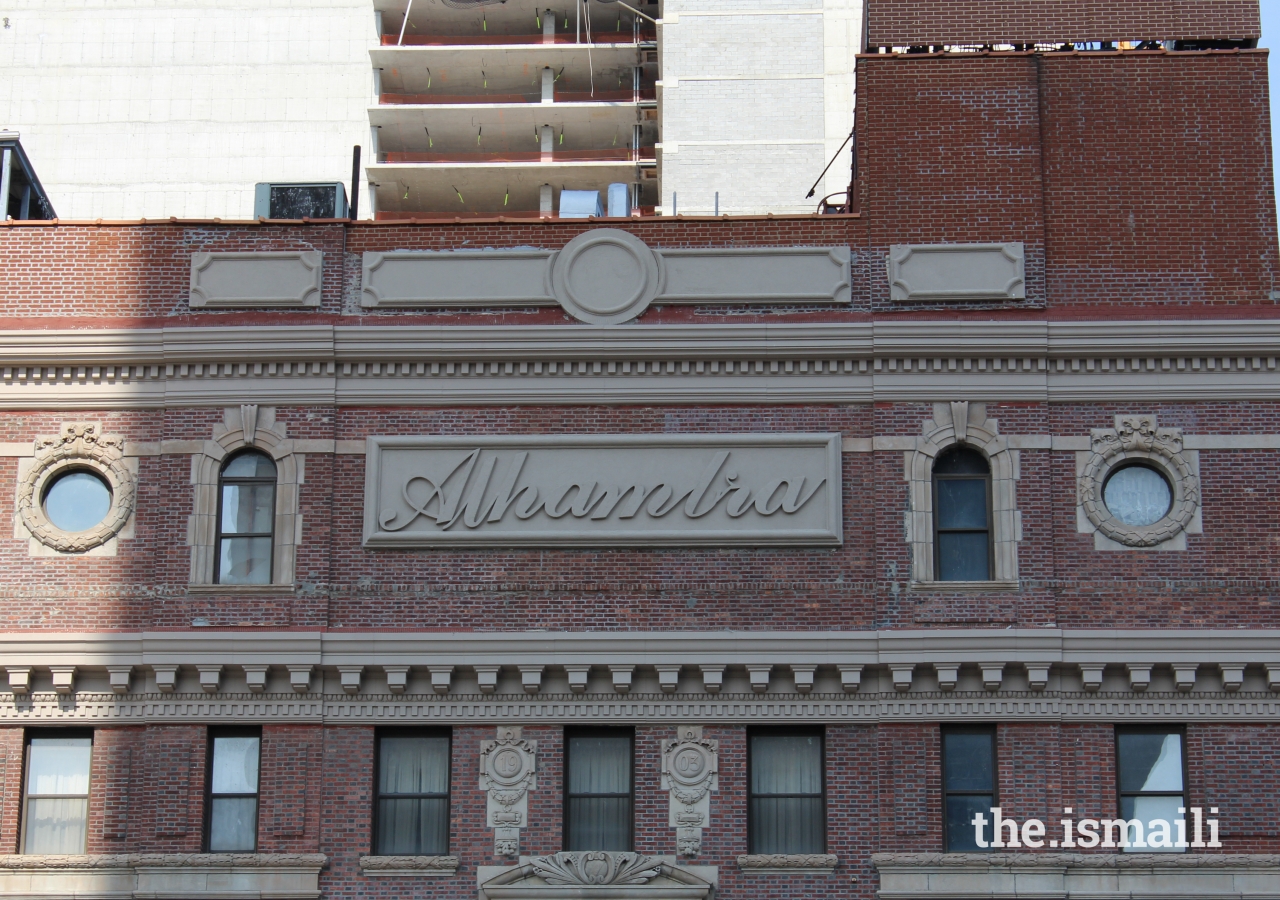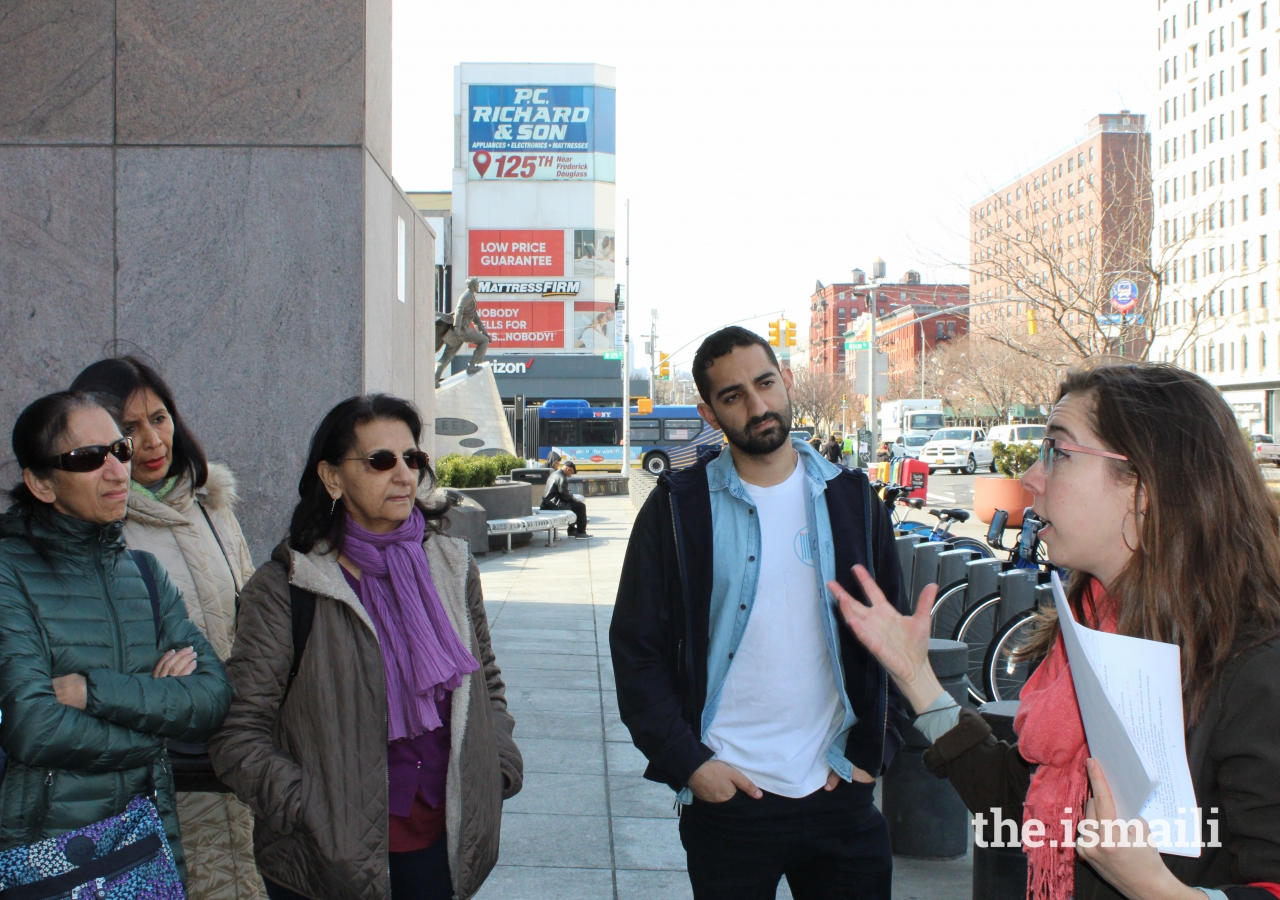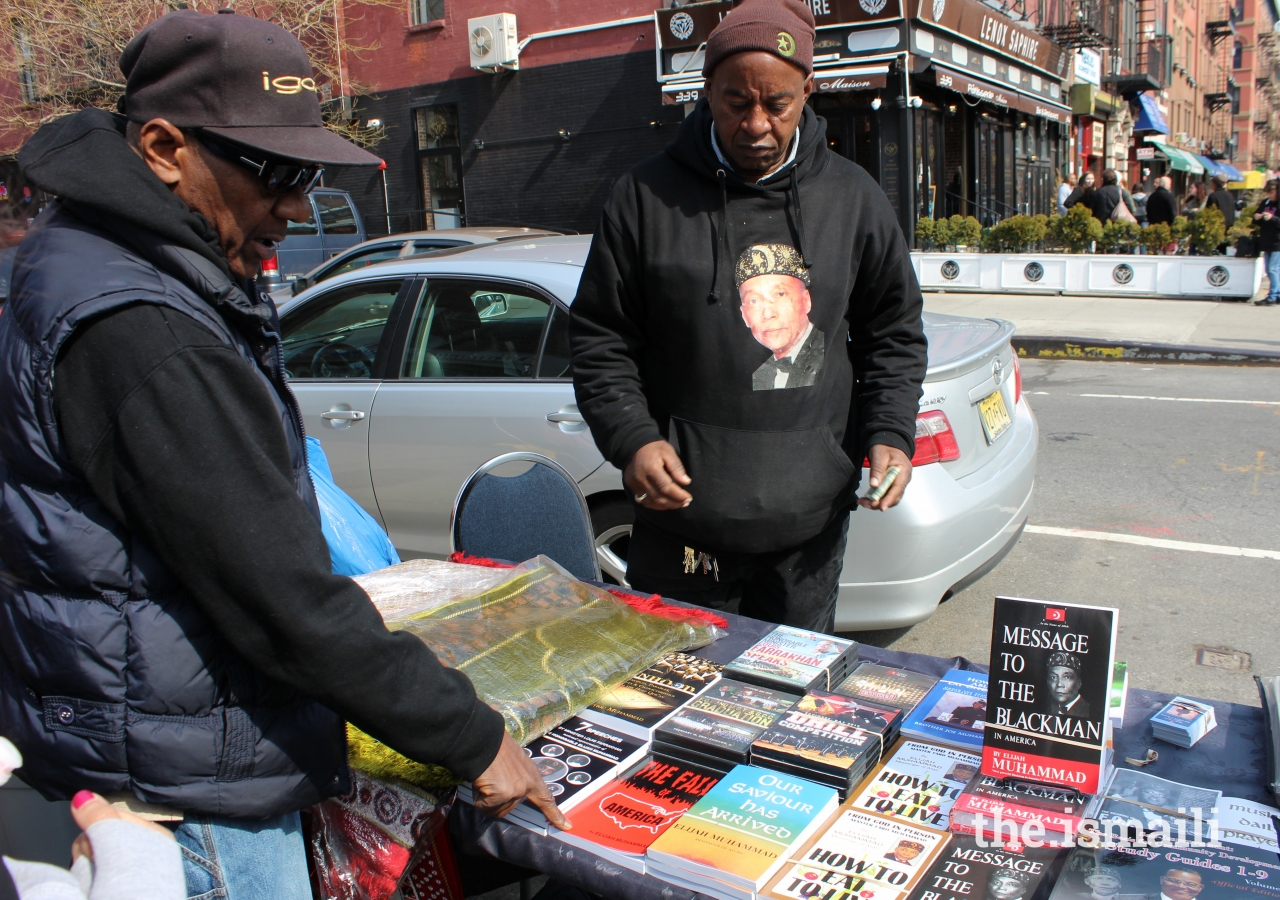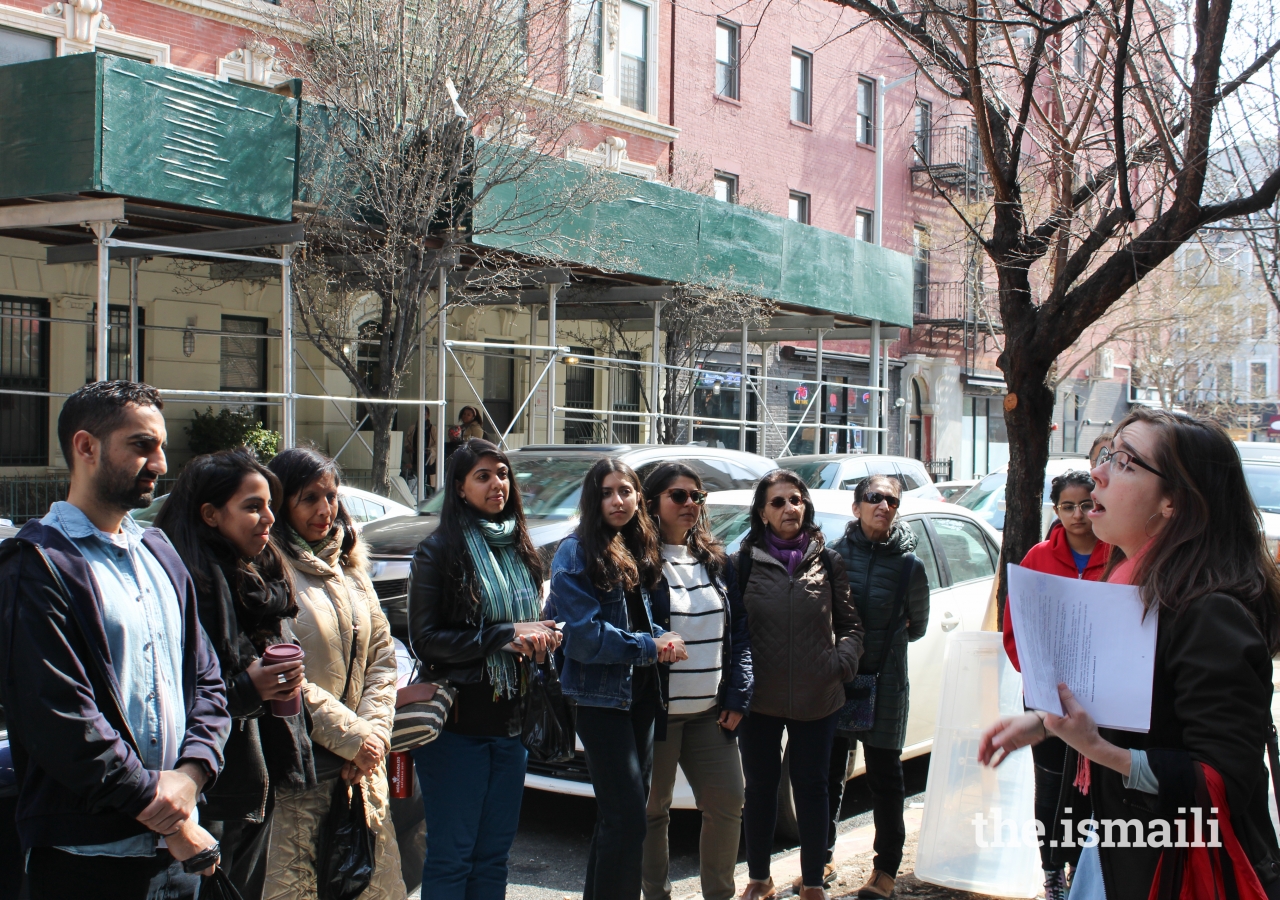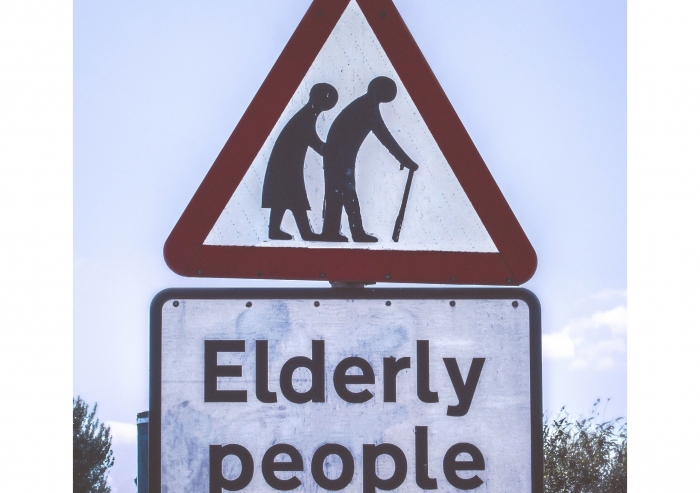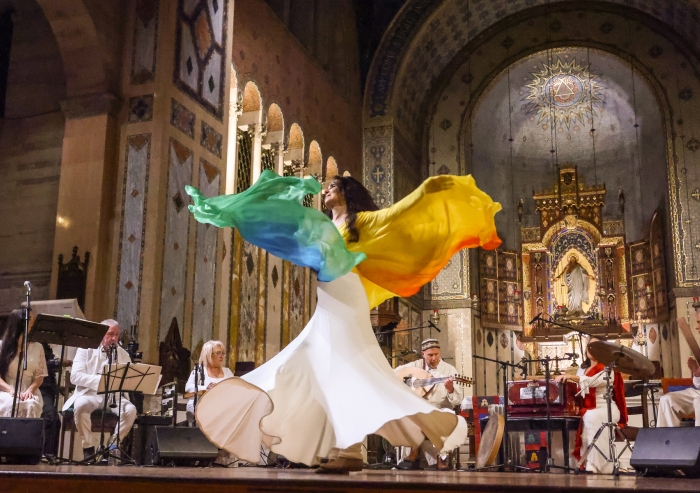From a population that represents nine percent of the City’s population, New York Muslims make up a 10 percent of the medical field, own 96,000 small businesses, and donate more than $608 million in charity annually. The history of Harlem is deeply connected to Islam, particularly Islam’s emphasis on knowledge, social justice, and diversity; however, Ms. Merriman notes the absence of landmarks along the route that commemorate this. Instead, tour participants experienced the history of Harlem through oral stories and food rather than plaques. Ms. Merriman designed the trip for university students at the request of the College Program on Islam (CPOI). After its success, she has been sought to provide tours to interested visitors a couple times per year and updates the content as she makes new discoveries.
Dr. Hussein Rashid, professor at Columbia University and himself once the coordinator for CPOI, said he arranged this tour for Jamati members in order to “seize opportunities to expand our knowledge,” following Mawlana Hazar Imam’s general guidance. “As an Ismaili Muslim, I believe it’s important that we learn about and engage with our history in ways that do not isolate us but recognize our role in the world. As a result, I look for opportunities that allow [me] to experience my history and faith and try to share [this] with members of the Jamat.”
After Ms. Merriman provided a brief background on Muslims in New York, participants related to the emphasis on the importance of knowledge and found parallels with Ismaili values and the words of the Imam.
The history of Islam in Harlem is lined with notable figures who encouraged knowledge and education. For example, Louis Michaux started the famed, yet now absent African National Memorial Bookstore in Harlem, frequented by intellectuals like Malcolm X, importing books from all over the world for more than four decades. An audio clip of Michaux rhyming about how “knowledge is power” transported participants to a historical time and helped bring the bookstore back to life.
Social justice also figured prominently in the narrative. The painted Planet Harlem mural at the corner of Malcolm X Boulevard and West 126th Street features prominent leaders advancing social justice causes, including notable early adoptees of Islam who organized labor movements and advocated for fair wages and employment for the marginalized.
As the group approached Mosque No. 7 of the Nation of Islam, several participants bought bean pies, famed as the “only legitimate Muslim-American” dish, created by the Nation to replace sweet potato pie and disassociate from a slave diet. Continuing the journey through food, the group imagined the scent of Bengali cuisine wafting across 127th Street from what was one of the first desi restaurants, which was often frequented by members of Malcolm X’s organization. Participants were pleasantly surprised to discover that ship workers from East Bengal were some of the first Muslims to settle in New York at a time when the US was not welcoming to Asian immigrants, and that these immigrants played an active role in the history of social justice in Harlem.
Next, tour-goers were lucky to visit the “Five Percenters,” just prior to the official naming the northwest corner of 126th Street and Adam Clayton Powell, Jr. Blvd to “Allah, Justice & The Five Percenters Square,” after their leader and movement. Here, Ms. Merriman explained another approach to knowledge – the proliferation of their numerology and use of ciphers, including its influence on hip-hop with terminology such as “droppin’ science” or “breaking it down”, and influencing the music of artists from the Wu Tang Clan to Erykah Badu.
Stopping for questions, participants inquired about the role of women in the history of Islam in Harlem. While a couple individuals were identified, such as Yuri Kochiyama, a colleague of Malcolm X who worked with prison populations and emphasized the role of knowledge, the group noted that the history of Harlem, as with much of history in general, is focused on prominent figures and therefore does not adequately capture those (often women) who helped their rise.
Next, as the group approached the iconic Apollo Theatre to John Coltrane’s “Love Supreme” (said by some to fade into a dhikr-like “Allah Supreme”), an example of the diversity within Islam was highlighted through connections between Islam and jazz. As the United States sent Jazz Ambassadors for music tours abroad in order to win hearts and minds during the Cold War, musicians were influenced by their interactions with Muslims in other countries and brought back this influence through their music, adding to the diversity of Islam in Harlem. While glancing over at the location of the former Somali mosque (now taken over by a corporate establishment), the group was reminded of the role of “the mosque” and religious communities in creating a safe space for new immigrants, an experience that resonated with many.
Unfortunately, Muslim communities, especially those who support recent immigrants, struggle to maintain their presence in Harlem thanks to gentrification’s rising rental and ownership prices. This was clearly illustrated in Little Africa by the empty lot where the primarily West African Masjid al-Aqsa once stood before its forced closure and move due to skyrocketing rents.
The tour finally ended outside the colorful and majestic Masjid Malcolm Shabazz across the street from the Harlem African Market. Over West African food, some participants reflected on the tour and the hidden history of Muslims in Harlem and its relevance to the ideals of the Manhattan Jamat.
Much to the excitement of the participants, during the tour Ms. Merriman had produced and shared a 1932 New York Times article quoting a London lecture of Mawlana Sultan Mahomed Shah discussing the similarities between Islam and the West, and the necessity for partnership: “It is seldom recognized that the Islamic faith can be accepted and practiced under modern conditions, and that it stands for a brotherly internationalism. Its simple creed and high ethical conception, when properly understood, cannot fail to appeal to the idealism of the American people.”
Harlem presented, and still presents, a microcosm of the diversity of the wider Muslim ummah, with the Muslim community in Harlem becoming characterized by an intermixing of cultures throughout the decades. Communities that were initially established on cultural lines saw Muslims of various racial and ethnic backgrounds praying together, intermarrying, banding together to support labor movements and social justice issues. They spread knowledge, transcending even their own previously held beliefs about the superiority of certain races and the place of their own race in society. Throughout the tour, examples of this cooperation were ubiquitous, from the intermarriage of Bengali sailors with Latina women, to the intellectual exchange between black workers-rights movements and the Pakistan League’s inter-community and immigration work, to the intention for the new 96th Street mosque to be funded by a collection of donors.
The cooperative nature of this pluralism stood out to participants, with Sadaf Sajwani remarking, “there's such a close connection between South Asians and the African American community but we hardly ever acknowledge or recognize it. We sometimes see ourselves different from other communities of color, but the reality is, we're extremely similar in regard to our experiences in the US, and we need to do a better job of building coalitions, of building relations with other communities of color.”

